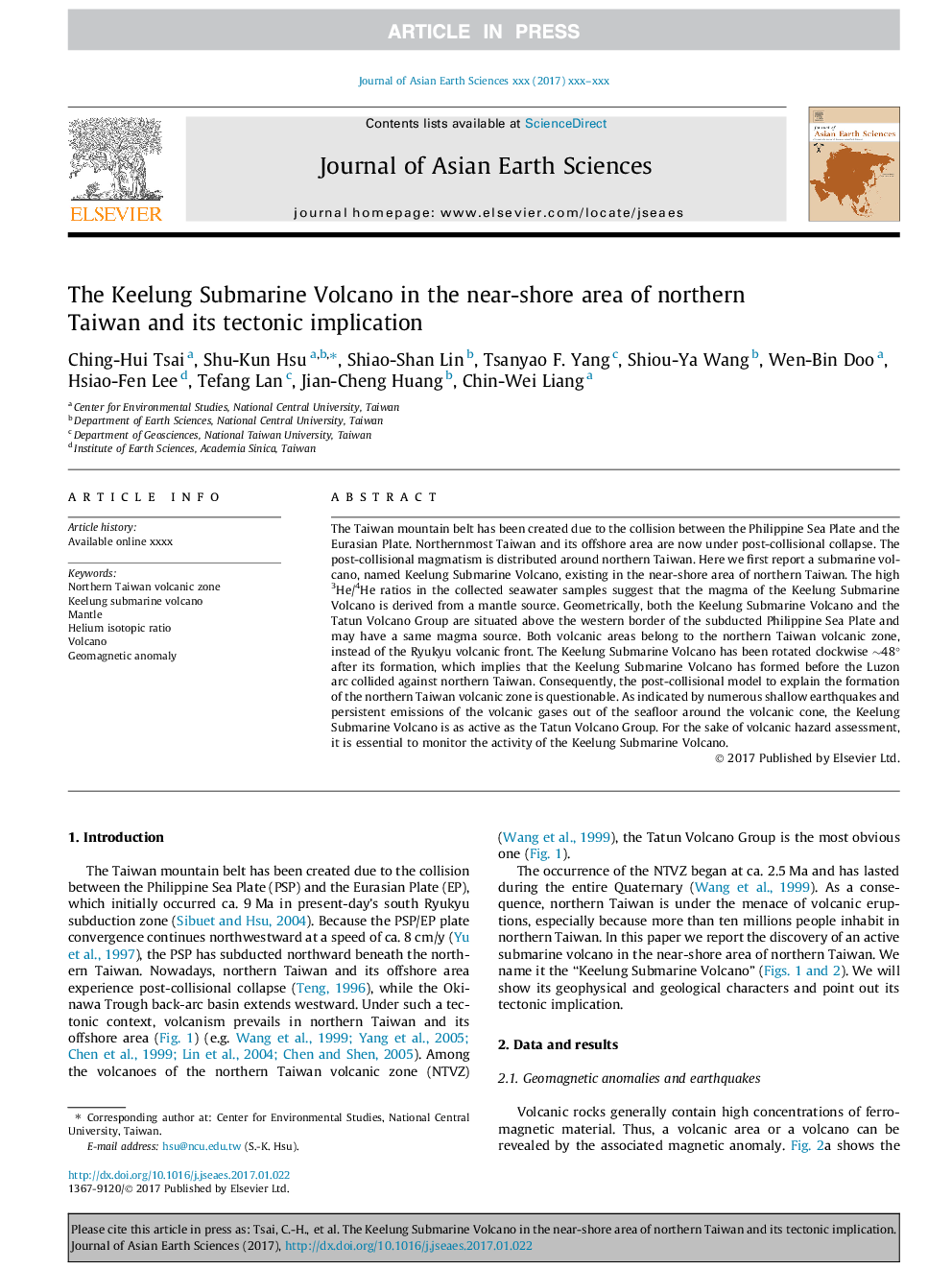| Article ID | Journal | Published Year | Pages | File Type |
|---|---|---|---|---|
| 8914255 | Journal of Asian Earth Sciences | 2017 | 7 Pages |
Abstract
The Taiwan mountain belt has been created due to the collision between the Philippine Sea Plate and the Eurasian Plate. Northernmost Taiwan and its offshore area are now under post-collisional collapse. The post-collisional magmatism is distributed around northern Taiwan. Here we first report a submarine volcano, named Keelung Submarine Volcano, existing in the near-shore area of northern Taiwan. The high 3He/4He ratios in the collected seawater samples suggest that the magma of the Keelung Submarine Volcano is derived from a mantle source. Geometrically, both the Keelung Submarine Volcano and the Tatun Volcano Group are situated above the western border of the subducted Philippine Sea Plate and may have a same magma source. Both volcanic areas belong to the northern Taiwan volcanic zone, instead of the Ryukyu volcanic front. The Keelung Submarine Volcano has been rotated clockwise â¼48° after its formation, which implies that the Keelung Submarine Volcano has formed before the Luzon arc collided against northern Taiwan. Consequently, the post-collisional model to explain the formation of the northern Taiwan volcanic zone is questionable. As indicated by numerous shallow earthquakes and persistent emissions of the volcanic gases out of the seafloor around the volcanic cone, the Keelung Submarine Volcano is as active as the Tatun Volcano Group. For the sake of volcanic hazard assessment, it is essential to monitor the activity of the Keelung Submarine Volcano.
Keywords
Related Topics
Physical Sciences and Engineering
Earth and Planetary Sciences
Geology
Authors
Ching-Hui Tsai, Shu-Kun Hsu, Shiao-Shan Lin, Tsanyao F. Yang, Shiou-Ya Wang, Wen-Bin Doo, Hsiao-Fen Lee, Tefang Lan, Jian-Cheng Huang, Chin-Wei Liang,
